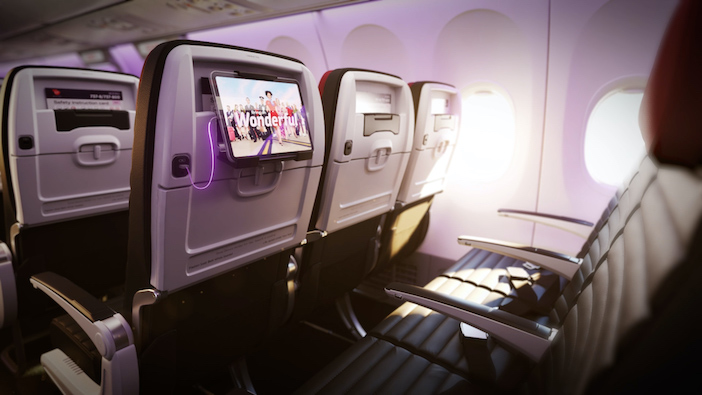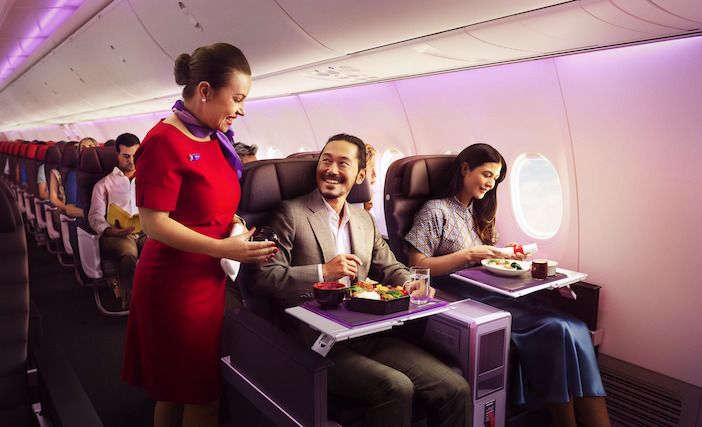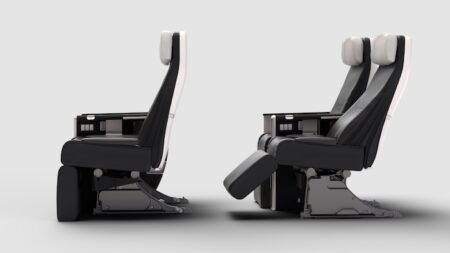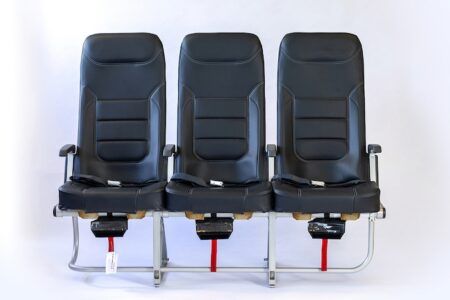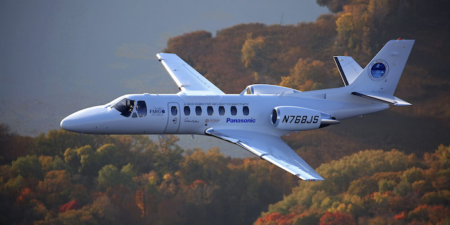Virgin Australia has taken delivery of its first Boeing 737-8, complete with new business class and economy class cabin interiors. The cabins will be rolled out across the remaining seven Boeing 737-8s Virgin Australia has on order by Q1 2024, its 25 737-10 aircraft on order (delivery due from late 2024), and will also be retrofitted to the airline’s remaining Boeing fleet, as part of a passenger experience investment programme worth approximately AUD$110 million (US$75m).
This B737-8 is the first aircraft in the airline’s fleet renewal programme, an investment aiming to help Virgin Australia meet its net-zero emissions target by 2050. The B737-8 is claimed to be at least 15% more fuel efficient per flight compared with Virgin Australia’s current Boeing 737-800 NG fleet.
So what do the new B737-8 cabin interiors bring?
Perhaps the most useful feature is the larger overhead lockers, with capacity to stow up to 50% more carry-on baggage than in the 737-800 NGs (individual carry-on luggage limits will not increase).
The airline has also brought in wider business-class seats with leg rests, extendable footrests, storage compartments, tablet/device holders, in-seat power, and water bottle holders.
The new economy-class seat design features a ribbed cover for comfort and ergonomics, a personal tablet/device holder, and in-seat power.
You can watch a video flythrough of the cabins HERE.
A new seat configuration for Virgin Australia will also be rolled out, with a newly designed cabin divider between business class and economy allowing for greater floor space in the economy cabin and the subsequent installation of between six and 12 additional economy seats.
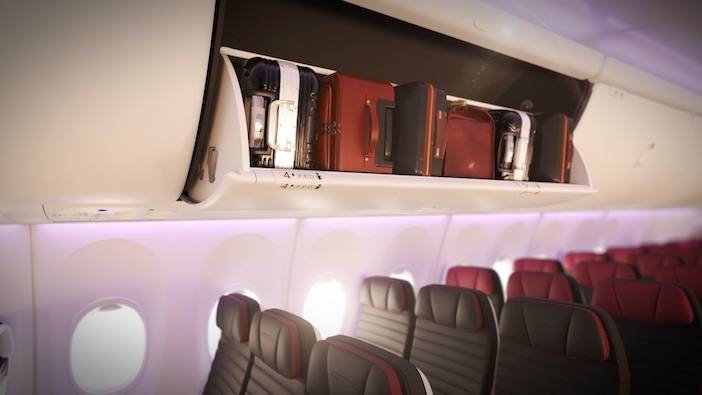
The Boeing 737-800 retrofit programme
The retrofit programme will commence later this year, bringing in an interior refresh and product upgrade that includes new business-class seats with in-seat power (consistent with the new B737-8), the installation of new or refreshed economy-class seats with in-seat power (again with a design consistent with the B737-8), and the introduction of in-flight wi-fi and complimentary IFE (via a guest’s own personal device). The cabin refurbishments will also include the replacement of one Economy X row with economy seating on all Boeing 737-800 aircraft.
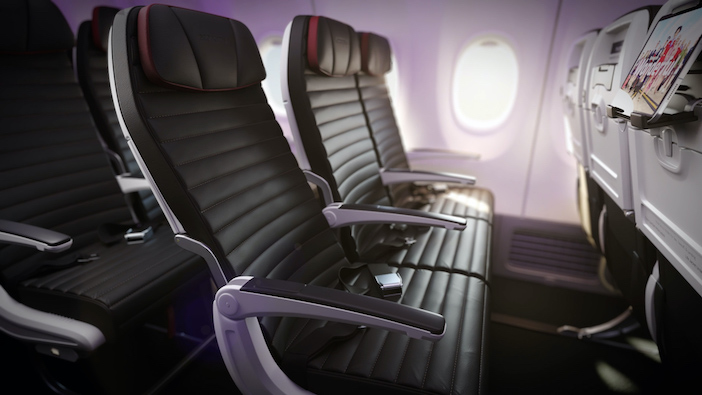
The retrofits are expected to be completed over the next two years, subject to operational requirements. Once the cabin refresh programme is complete, Virgin Australia expects to have more seats and a more consistent guest experience across all flights operated by its Boeing 737 aircraft.
Virgin Australia’s Boeing 737 seat capacity once the cabin refresh project is complete:
- Boeing 737-800 and 737-8 aircraft: 31 rows, 8 business-class seats, 174 economy-class seats
- Boeing 737-700 aircraft: 23 rows, 8 business-class seats, 126 economy-class seats). This includes the introduction of a business-class cabin on 7 existing Boeing 737-700 aircraft which are currently fitted with economy seating only.
Speaking about the new cabin interiors, Virgin Australia Group’s chief customer and digital officer, Paul Jones, said: “In 2021 we introduced a prototype cabin interior on two Boeing 737-800 aircraft, and over the last couple of years we’ve been able to obtain feedback from our guests, which enables us to enhance our entire Boeing fleet with the features that are most important to them.
“If you look at the business community, what matters most to them outside of network schedule is in-seat power and in-flight wi-fi, so I’m really excited that will feature on the majority of our fleet. There’s also a huge number of customers who fly with us for leisure who value in-seat power for a different reason – powering devices to keep their kids entertained, or streaming and bingeing on the latest must-see shows.
“With the reconfiguration of our cabin interior, we are also able to add more seats to the market without changing the legroom experience, providing Australian travellers with even more choice and great value airfares as well as a consistent in-flight experience,” he said.
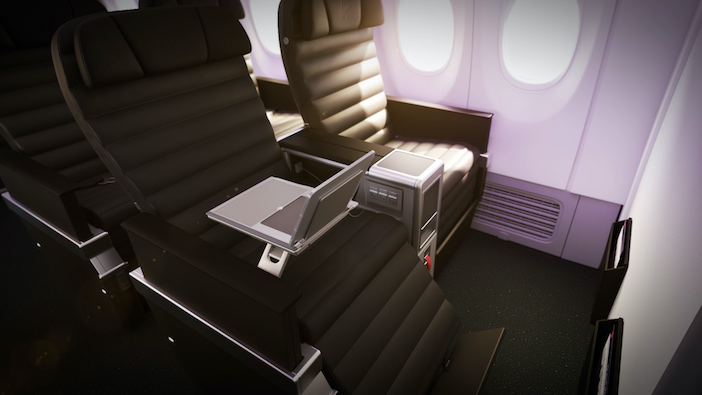
Virgin Australia Group CEO, Jayne Hrdlicka, added that aid that welcoming the Boeing 737-8 aircraft into the fleet is “an important milestone for Virgin Australia as we grow and renew our fleet and continue investing in our onboard guest experience. Sustainability is so important for the future of the airline industry globally, and fleet renewal is a major step in reducing carbon emissions intensity.”
“We anticipate our fleet renewal programme, together with other fuel efficiency initiatives, will support over 80% of our 2030 interim target to reduce Virgin Australia’s carbon emission intensity by 22%.”
